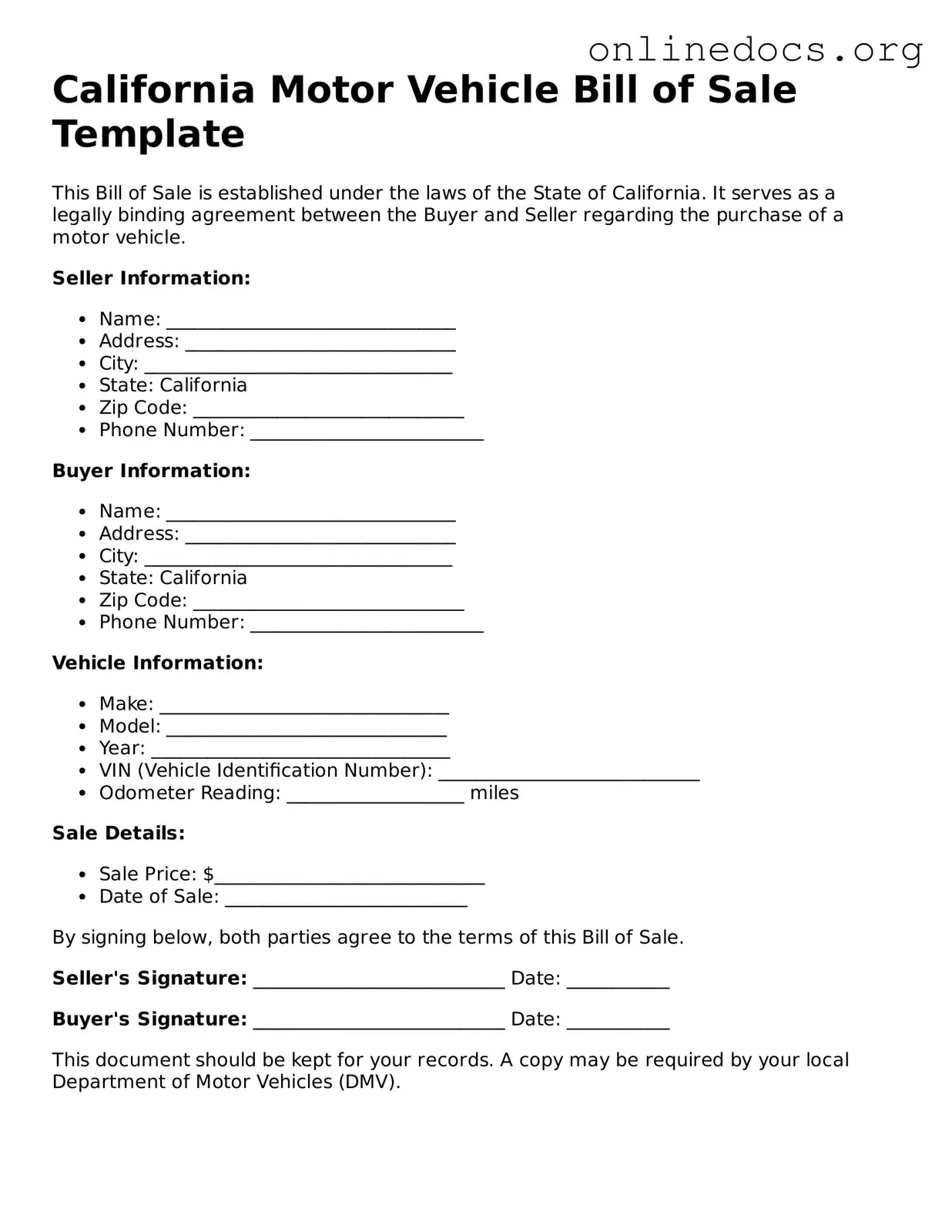The California Vehicle Transfer Form is similar to the Motor Vehicle Bill of Sale. This document serves as a record of the transfer of ownership for a vehicle. It includes details such as the buyer and seller’s information, vehicle identification number (VIN), and sale price. Both forms aim to provide legal proof of the transaction, ensuring that the transfer is documented properly for future reference.
The Vehicle Registration Application shares similarities with the Motor Vehicle Bill of Sale. While the Bill of Sale confirms the sale, the Registration Application is necessary for the buyer to register the vehicle in their name. It typically requires information from the Bill of Sale, such as the VIN and the sale price, to establish ownership and facilitate the registration process with the Department of Motor Vehicles (DMV).
The Odometer Disclosure Statement is another document that aligns with the Motor Vehicle Bill of Sale. This statement is often included with the Bill of Sale to disclose the vehicle's mileage at the time of sale. It is important for protecting both the buyer and seller from potential fraud. Accurate odometer readings help ensure that the buyer is aware of the vehicle’s condition and history.
The Vehicle Title is closely related to the Motor Vehicle Bill of Sale. The title is the official document that proves ownership of the vehicle. When a sale occurs, the seller must sign the title over to the buyer, often in conjunction with the Bill of Sale. This transfer is essential for the buyer to establish legal ownership and to register the vehicle with the DMV.
In addition to the essential documents mentioned, a comprehensive resource for completing your purchase or sale is available at All Templates PDF, where you can find templates tailored to your specific needs. Proper documentation is key in these transactions, as it protects all parties involved and ensures compliance with state regulations.
The Release of Liability form also parallels the Motor Vehicle Bill of Sale. This document notifies the DMV that the seller has sold the vehicle and is no longer responsible for it. It protects the seller from any future liabilities associated with the vehicle. Submitting this form is a crucial step in the sale process, ensuring that ownership is officially transferred and that the seller is released from any obligations.
The Smog Certification is another relevant document. In California, many vehicles must pass a smog check before they can be sold. The certification proves that the vehicle meets state emissions standards. While the Motor Vehicle Bill of Sale records the transaction, the Smog Certification provides necessary compliance documentation, ensuring the vehicle is roadworthy and legally sellable.
The Insurance Verification form is also similar in purpose to the Motor Vehicle Bill of Sale. This document confirms that the buyer has obtained insurance for the vehicle after the sale. It is often required by the DMV when registering the vehicle. Having insurance is a critical step in the ownership process, ensuring that the buyer is protected against potential liabilities.
Lastly, the Loan Payoff Statement may be relevant if the vehicle was financed. This document indicates the remaining balance on a vehicle loan. When selling a financed vehicle, the seller must provide this statement to ensure that the loan is paid off at the time of sale. It works in conjunction with the Motor Vehicle Bill of Sale to ensure that all financial obligations are settled before the transfer of ownership occurs.
